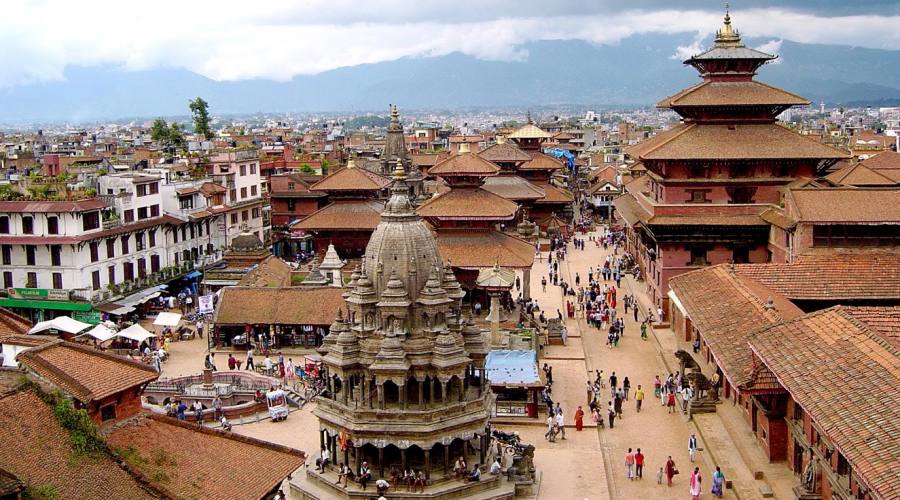
The History of Buddhist Pilgrimage Sites in India and Nepal
Posted on April 26, 2024
Embarking on a pilgrimage to the sacred Buddhist sites in India and Nepal is a profound journey that traces the footsteps of Siddhartha Gautama, the Buddha. These ancient sites not only hold deep spiritual significance but also offer a glimpse into the rich historical and cultural tapestry of Buddhism. This blog delves into the history of these revered pilgrimage destinations, providing insights for travelers and spiritual seekers alike.
The Birthplace of Buddhism: Lumbini, Nepal
Lumbini is celebrated as the birthplace of Siddhartha Gautama, who later became the Buddha. Around 563 BCE, Queen Maya Devi gave birth to the future Buddha in the lush gardens of Lumbini. This event marked the beginning of a spiritual legacy that would transform countless lives. The Maya Devi Temple, built over the precise spot where Buddha was born, stands as a testament to this momentous event. Lumbini’s significance is underscored by the numerous monasteries and monuments erected by Buddhist communities from around the world, making it a vibrant hub of spiritual activity.
Enlightenment Under the Bodhi Tree: Bodhgaya, India
Bodhgaya is the site where Siddhartha Gautama attained enlightenment under the Bodhi Tree, around 528 BCE. This transformative event is the cornerstone of Buddhist teachings. The Mahabodhi Temple Complex, a UNESCO World Heritage site, is built around the sacred Bodhi Tree. Pilgrims from all corners of the globe gather here to meditate and seek inspiration from the place where Buddha transcended earthly existence and discovered the path to Nirvana. The serene ambiance of Bodhgaya makes it an ideal location for deep spiritual practice and reflection.
First Sermon and the Dharma Wheel: Sarnath, India
After attaining enlightenment, Buddha traveled to Sarnath, near Varanasi, where he delivered his first sermon to his five former companions. This sermon, known as the Dhammacakkappavattana Sutta, set the Wheel of Dharma in motion and introduced the core principles of Buddhism: the Four Noble Truths and the Eightfold Path. The Dhamek Stupa and the Ashoka Pillar are prominent landmarks in Sarnath, symbolizing the spread of Buddha’s teachings. Sarnath remains a vital pilgrimage site for those wishing to study and reflect on the foundational teachings of Buddhism.
The Final Resting Place: Kushinagar, India
Kushinagar is revered as the site where Buddha entered Mahaparinirvana, the final passing away, around 483 BCE. The Mahaparinirvana Temple houses a reclining statue of Buddha, representing his peaceful departure from the world. The Ramabhar Stupa marks the spot where Buddha was cremated. Pilgrims visit Kushinagar to pay their respects and to contemplate the impermanence of life, a central tenet of Buddhist philosophy. The tranquil atmosphere of Kushinagar provides a space for deep meditation and reflection on the cycle of birth, death, and rebirth.
The Seat of Learning: Nalanda and Rajgir, India
Nalanda was an ancient center of learning and one of the first residential universities in the world, flourishing from the 5th to the 12th century CE. It attracted scholars from various parts of Asia, including China, Korea, and Japan. Nalanda University played a crucial role in the dissemination of Buddhist teachings and philosophy. Nearby Rajgir is associated with many events in Buddha’s life, including the first Buddhist council held shortly after his death. The Gridhakuta Hill in Rajgir is where Buddha delivered many important discourses. Together, Nalanda and Rajgir symbolize the intellectual and spiritual development of Buddhism.
Conclusion
The history of Buddhist pilgrimage sites in India and Nepal is a rich tapestry woven with spiritual significance, historical events, and cultural heritage. These sacred sites offer pilgrims and travelers a profound connection to the origins and teachings of Buddhism. From Lumbini’s tranquil birthplace to Bodhgaya’s enlightenment, Sarnath’s first sermon to Kushinagar’s final rest, and Nalanda and Rajgir’s intellectual legacy, each location provides a unique glimpse into the life and teachings of the Buddha.
Embarking on a pilgrimage to these revered destinations with Buddha Trails Tours allows you to immerse yourself in the spiritual and historical essence of Buddhism. Our expertly guided tours ensure a deeply enriching experience, helping you connect with the profound legacy of the Buddha. Discover the spiritual depth and historical richness of these sacred sites, and let your journey towards enlightenment and inner peace begin.
